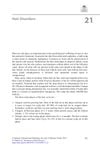Short Communication: Temporal Changes in the Skin Morphology of Dairy Cows During the Periparturient Period
April 2018
in “
Journal of dairy science
”
TLDR Dairy cows' skin and hair follicles change size and growth phase around the time they give birth.
The study observed temporal changes in the skin morphology of 7 pluriparous dairy cows during the periparturient period. Hair follicle width decreased from 108.8 ± 5.9 µm in the dry period to 95.5 ± 5.5 µm at 28 days postpartum, then increased to 104.2 ± 5.3 µm at 56 days postpartum. The percentage of anagen hair follicles was highest in the dry period (41.4 ± 3.4%) and lowest at 28 days postpartum (18.5 ± 3.4%). Sebaceous gland size followed a similar pattern. Despite these changes, overall skin morphology parameters remained stable, indicating that the cows' nutritional state during the periparturient period did not significantly affect their skin morphology.





